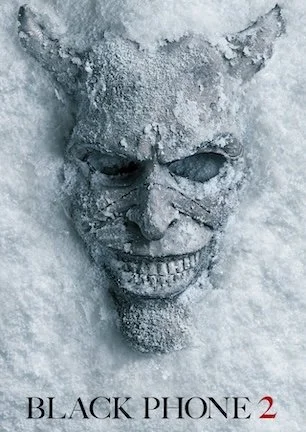Studio: Naedomi
Director: Anthony DiBlasi
Writer: Bruce Wood, Scott Poiley
Producer: Scott Poiley, Bruce Wood
Stars: Kelen Coleman, Kevin Alejandro, Rus Blackwell, Hank Stone, Louise Fletcher
Review Score:
Summary:
After a séance leaves her haunted by a ghost, a young woman is led to confront a twisted serial killer known as “Geppetto.”
Review:
Situated between Daytona Beach and Orlando is the Florida community of Cassadaga. Thanks to its heavy concentration of spiritual mediums, Cassadaga has garnered itself a reputation for being the “Psychic Capital of the World.” As the setting for the film with same name, it makes an ideal backdrop for a tale of séances gone wrong and a ghastly haunting. Yet “Cassadaga” only needs the location for a launch pad, as its tale delivers far more kick than a typical ghost story.
Life has been hard on Lily. Already coping with post-lingual deafness, the untimely death of their parents gave Lily legal guardianship over her gifted younger sister Michele. Tragedy strikes again when Michele is taken too soon, leaving Lily to find a fresh path for herself on an art scholarship at Cassadaga University. Lily starts a new romance and takes up residency in the old Southern home of wealthy benefactress Claire Andersen and Claire’s oddly reclusive grandson Thomas.
Kelen Coleman, familiar to fans of HBO’s “The Newsroom” as Maggie’s roommate Lisa Lambert, gives Lily exactly what the part needs: accessible charm and a buoyant personality that is believable without cheaply tugging at the viewer’s sympathies. Believing her character as deaf can be a hard sell though, as it requires a reminder in moments when that fact is underutilized or unimportant.
After Lily attends a presumably harmless psychic reading to contact her dead sister, she unwillingly attaches herself to a ghost that has plans of its own. Lily is about to become a central figure in the web of a sadistic stalker that the media refers to as “Geppetto.”
They may have transvestitism in common, but Geppetto makes Buffalo Bill look sane by comparison. Geppetto earns his moniker from an evil predilection for turning victims into ghoulish marionettes. Severed limbs are fitted with mechanical joints as the murderer builds an unimaginable living nightmare. When Geppetto screams a banshee shriek of sexual frustration and fury while putting on his own personal puppet show, “Cassadaga” shows its own frightening ability to offer a uniquely disturbing portrait of a macabre serial killer.
“Cassadaga” balances its tortured captive imagery by adding a harrowing take on a vengeful ghost haunting. The blend of real world brutality with poltergeist activity keeps “Cassadaga” moving forward even in moments when it stalls to overdevelop subplots or to lean on rote cinema conventions.
The screenplay could have used a Geppetto of its own to make itself more fluid and maneuverable in the character department. Earlier acts almost bury themselves under a mountain of lengthy backstory that makes for authentic personalities, yet matters little to the overall story beats.
“Cassadaga” intends to be several different films rolled into one, but the time devoted to certain arcs smothers some of the momentum. The script has trouble with juggling the pages given to each person and with forcing purpose into their individual roles. Lily is given a romance that fleshes out her character, but scenes of relating with her single father beau take up a lot of real estate for a character that is suddenly dropped before the main storyline even mounts towards its climax.
In the opposite vein, Louise Fletcher is underutilized while becoming conspicuous by her own absence later in the film, too. The movie also invests in a red herring that never quite works for reasons that are obvious from the prologue scene. Had the characters fit better into the way the plot moves, “Cassadaga” could have rode at a swifter clip.
What is really interesting about the film’s value is that on their own, the individual story threads initially appear as though they do not offer anything new. On top of that, “Cassadaga” tries to get away with cheap tricks like an assembly of creepy dolls in the killer’s workshop, old timey music crackling on a vintage phonograph during the spirit summoning, and a gaggle of puzzle piece paintings that reveal a larger image.
And yet in spite of what seems to be a series of potentially overused tropes, the blend of these elements into the multiple sub-genres pushes “Cassadaga” past its overdeveloped characters and sometimes choppy sequencing for what is ultimately an engaging horror film. Getting past the things that “Cassadaga” fumbles over is an easy task when there is so much more that the film does right. And what it does right is it delivers a memorable murderer, a captivating heroine, and enough ghost-charged atmosphere to recommend it as both supernatural suspense and as a serial killer thriller.
NOTE: There is a post-credits scene.
Review Score: 75






Compelling performances keep “Hallow Road” swimming as strongly as possible against the strong current of a drowsy pace.